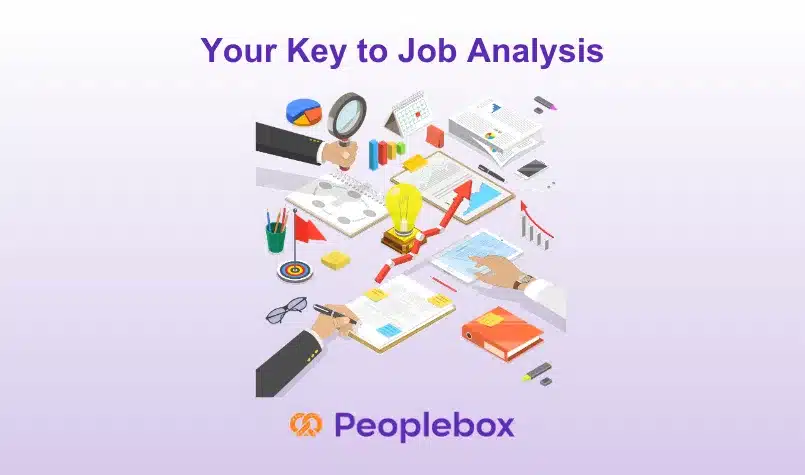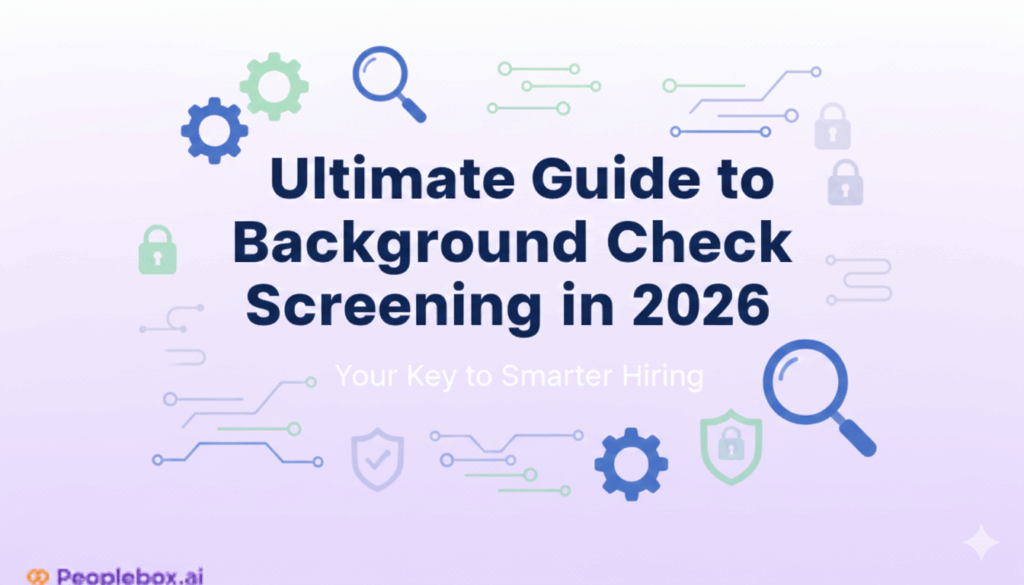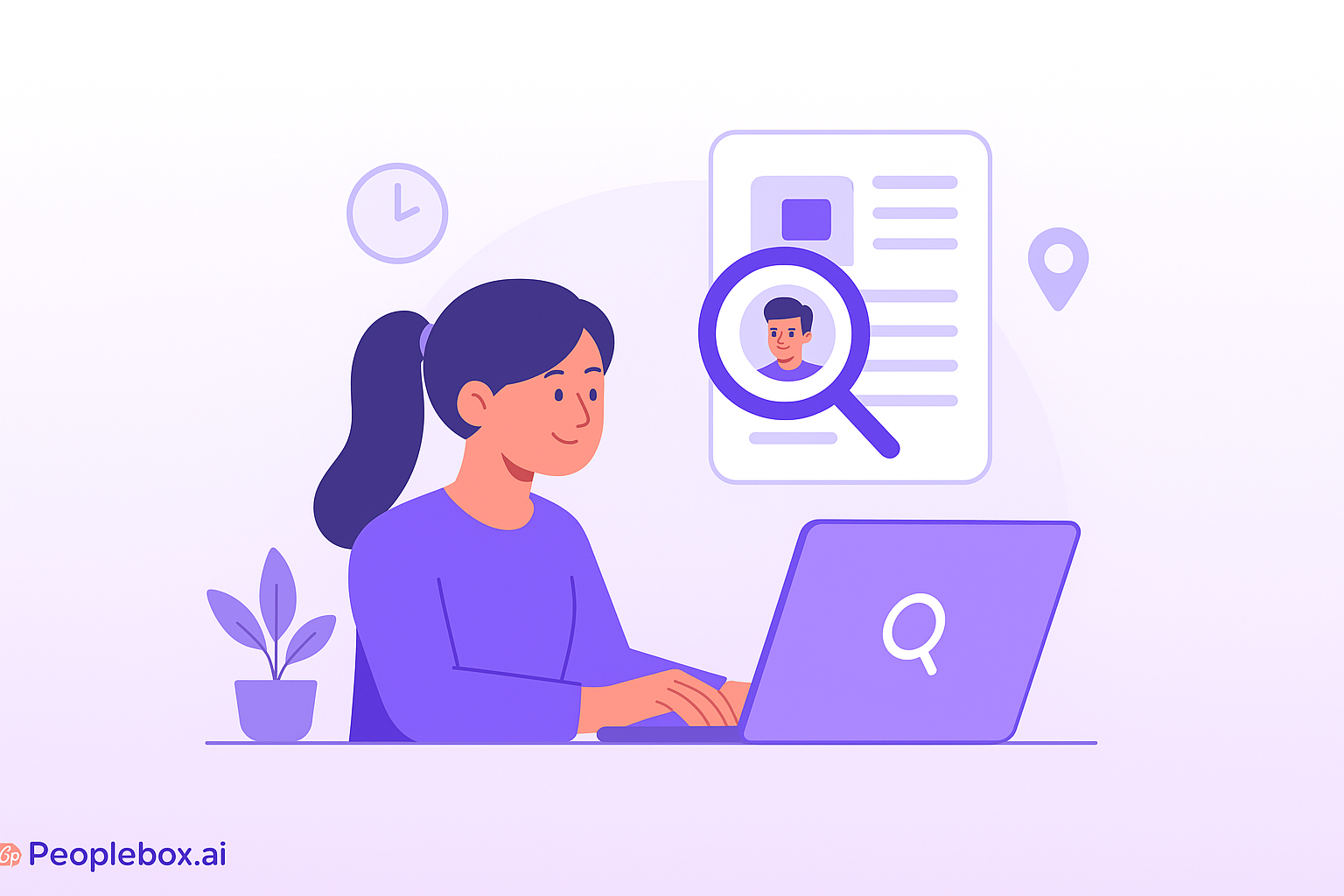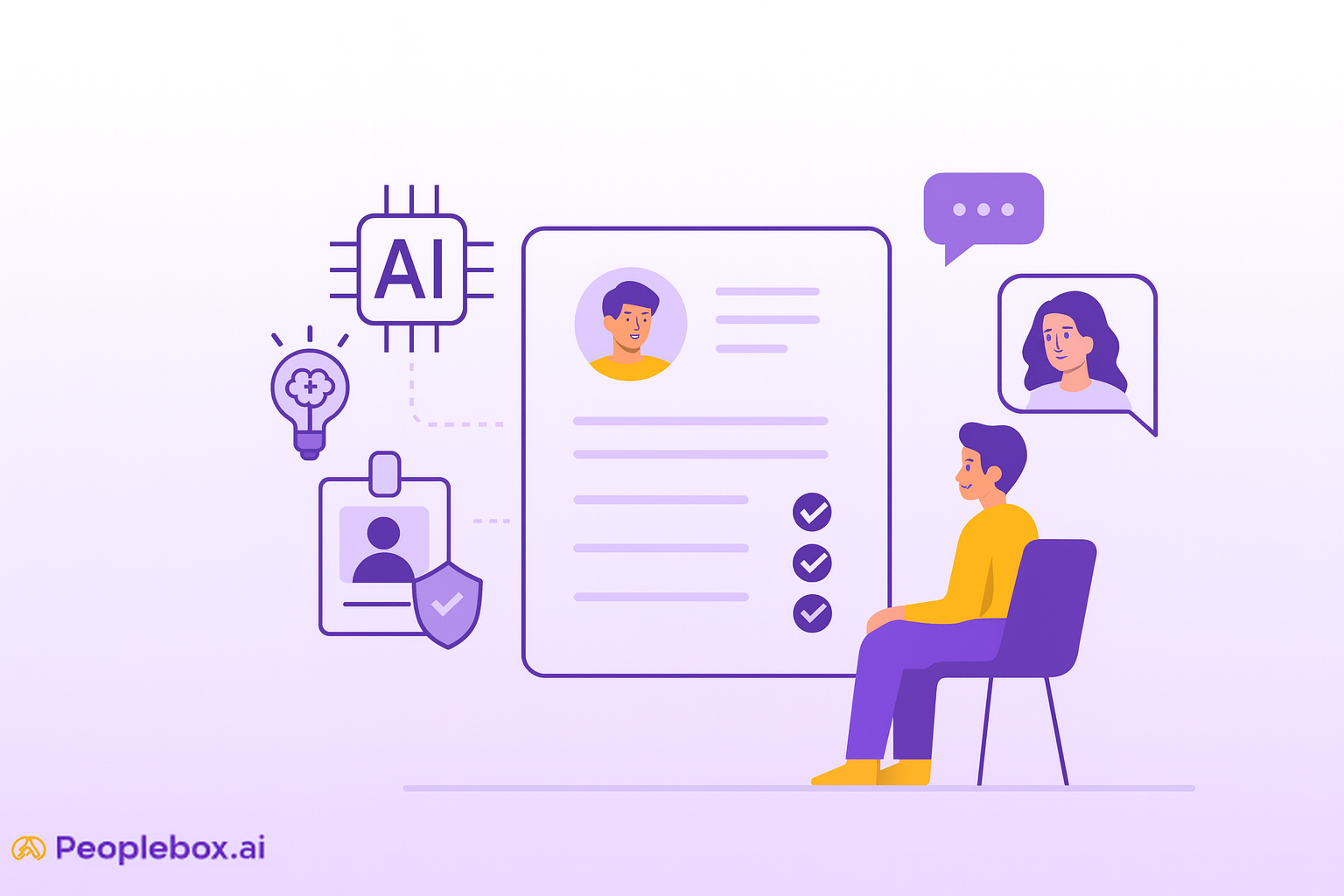Many HRs struggle with defining clear job roles and responsibilities.
An incomplete understanding of job functions can cause many problems in a company, such as:
- Confusion about who does what
- Hiring the wrong people
- Trouble managing performance
- Gaps in training
- Employees quitting often
- Poor planning for future leaders
- Misalignment with company goals
The solution lies in doing a detailed job analysis for key roles.
This article will show you more than 15 helpful ways to do a job analysis, along with the pros and cons of each method.
What Is Job Analysis
“Before you can talk about what makes the individual successful, you have to be able to answer the question, ‘For what job?’ What’s the job to be done? What matters?” says McKinsey senior partner Bill Schaninger.
That’s what a job analysis does.
Job analysis is a systematic process of gathering and studying information about a job, including:
- The duties and responsibilities of the job
- The skills required to do the job well
- The outcomes or results of the job
- The work environment (where and how the job is done)
It helps identify:
- The tasks that make up the role
- The skills needed to do those tasks
- How the job helps the company reach its goals
The result of a job analysis process is a document called job documentation. This document contains all the important details about the job.
Purpose of Job Analysis
According to Gallup research, only 45% know what is expected of them at work. Job analysis is crucial for establishing clear role expectations, which are fundamental to employee engagement and organizational success.
According to Gallup’s meta-analysis of over 112,000 teams and business units, knowing what is expected at work is strongly linked to important outcomes like:
- Productivity
- Employee retention
- Safety
- Customer engagement
- Employee well-being
Without clear expectations, organizational leaders are also at a significant disadvantage in accomplishing work and meeting customer needs.
By comprehensively understanding critical positions via job analysis, organizations can also make informed decisions in areas such as:
- Recruitment
- Training
- Performance management
- Compensation
- Strategic workforce planning
Suggested Read: What are the objectives of job analysis?
For Which Roles Should You Conduct Job Analysis
Doing a full job analysis for every role in a company can take a lot of time and might not always be needed.
Bill Schaninger from McKinsey recommends applying the Pareto principle – concentrating on the small number of roles that drive disproportionate results.
“In any given organization, there are 30 to 50 individual roles that are worth understanding at a granular level because they drive a disproportionate amount of value for the business… It’s a relatively small number, 30 to 50,” he says.
“In addition, there are probably eight to ten broad skill pools. Sales might be one example of a broad skill pool. Of those folks, there may be 20,000 in a given organization, but you can understand and come up with the archetype there.”
Sometimes, gaining just one or two critical insights into sales archetype, for example, can lead to a 3–5% increase in sales, he says.
Who Conducts Job Analysis
Job analysis is usually done by HR professionals to support various HR functions.
HR Specialists or Job Analysts lead the process, designing the methodology for data collection and ensuring consistency across the organization.
However, conducting a thorough job analysis requires input from various people:
- Managers provide expectations and performance standards
- Current employees (job incumbents) share daily tasks and challenges
- Subject Matter Experts (SMEs) offer insights for specialized jobs
- External consultants may be hired for complex roles or to provide an unbiased perspective
What Information Does a Job Analysis Include?
A comprehensive job analysis gathers a lot of information to fully understand a job and how it fits in the company.
The key parts usually included are:
1. Duties and Responsibilities
A list of tasks, how often they’re done, their importance, and decision-making authority.
2. Skills and Qualifications
Required education, experience, skills, and certifications.
3. Work Conditions
Where the job is done (office, outdoor), work schedule, overtime, and travel requirements.
4. Physical and Mental Demands
Tasks like lifting, standing, sensory needs, and mental tasks like problem-solving.
5. Job Context and Challenges
The role’s impact on company goals, external market factors, and common challenges.
6. Behavioral Competencies
Work ethic, teamwork, and communication skills.
7. Relationships
Reporting structure and interactions with internal and external contacts.
8. Performance Standards
Criteria for assessing performance and setting goals.
9. Career Path
Promotion potential and professional development.
10. Tools and Equipment
Required technology or specialized tools.
Job Analysis vs Job Descriptions vs Job Design
Job analysis is often confused with terms like job description and job design, but they are not the same. Here’s how they are different:
- Job analysis is the process of studying a job to understand what tasks, skills, and responsibilities it involves. This is the first step in understanding any job.
- Job description often comes after job analysis. It’s a written document that explains the job’s duties, responsibilities, and needed skills to candidates and employees.
- Job design is about organizing or changing a job to improve efficiency and employee satisfaction.
Example of a Job Analysis
Let’s look at a sample job analysis for a Customer Service Representative.
| Job Identification | |
| Job Title | Customer Service Representative |
| Job Code/ID | CSR-001 |
| Department | Customer Support |
| Location | Main Office, Anytown, USA |
| Reports To | Customer Service Manager |
| Job Summary | |
| The Customer Service Representative is responsible for providing exceptional customer service by handling inquiries, resolving issues, and ensuring customer satisfaction. This role involves interacting with customers via phone, email, and live chat, processing orders, and coordinating with other departments to address customer needs effectively. | |
| Duties and Responsibilities | |
| Handle Customer Inquiries | – Respond promptly to customer calls, emails, and live chat messages.- Provide accurate information about products, services, and policies. |
| Issue Resolution | – Identify and resolve customer issues and complaints.- Escalate complex cases to supervisors or specialized departments when necessary. |
| Order Processing | – Assist customers in placing orders, tracking shipments, and processing returns or exchanges.- Update customer accounts and records with order details. |
| Documentation | – Maintain detailed records of customer interactions and transactions.- Prepare reports on customer feedback, recurring issues, and service improvements. |
| Cross-Department Coordination | Collaborate with the sales, logistics, and technical support teams to address customer needs. |
| Customer Follow-Up | Conduct follow-up communications to ensure issue resolution and customer satisfaction. |
| Policy Adherence | – Stay updated on company policies, procedures, and product knowledge.- Comply with all regulatory standards and guidelines. |
| Essential Functions | |
| – Provide timely and professional customer service.- Accurately process orders and handle financial transactions.- Maintain confidentiality of customer information.- Communicate effectively with customers and team members. | |
| Job Specifications | |
| Education Requirements | – High school diploma or equivalent required.- Associate’s or bachelor’s degree in business administration or related field preferred. |
| Experience | – Minimum of 1-2 years of customer service experience.- Experience in a call center or retail environment is a plus. |
| Skills and Abilities | – Excellent verbal and written communication skills.- Proficient in Microsoft Office Suite and CRM software.- Strong problem-solving, conflict-resolution, and interpersonal skills.- Ability to multitask and manage time effectively. |
| Certifications/Licenses | Customer service certification is advantageous but not required. |
| Physical and Mental Demands | |
| Physical Requirements | – Ability to sit for extended periods while using a computer and telephone.- Manual dexterity to operate keyboard and mouse. |
| Sensory Requirements | – Clear vision for reading computer screens and documents.- Adequate hearing to communicate via phone. |
| Mental Requirements | – Capacity to handle stressful situations calmly.- Strong attention to detail and concentration. |
| Working Conditions | |
| Environment | Office setting with a workstation equipped with a computer and telephone.Moderate noise level due to other conversations and office equipment. |
| Work Schedule | – Full-time position.- Availability to work rotating shifts, including evenings, weekends, and holidays. |
| Travel Requirements | Minimal to none. |
| Relationships and Interactions | |
| Reporting Structure | Reports directly to the Customer Service Manager. |
| Internal Contacts | Collaborates with sales, logistics, technical support, and billing departments. |
| External Contacts | Interacts with customers, vendors, and shipping partners. |
| Performance Standards | |
| Key Performance Indicators (KPIs) | – Average response time to customer inquiries.- First-contact resolution rate.- Customer satisfaction scores (CSAT).- Call handling time. |
| Goals and Objectives | – Achieve a customer satisfaction rating of 90% or higher.- Resolve at least 80% of issues on the first contact.- Maintain an average call handling time of under 5 minutes. |
| Tools and Equipment Used | |
| Technology Requirements | – Proficiency with CRM software (e.g., Salesforce, Zendesk).- Familiarity with Microsoft Office Suite (Word, Excel, Outlook). |
| Special Equipment | – Telephone headset.- Dual-monitor computer setup. |
| Behavioral Competencies | |
| Customer Focus | Demonstrates a strong commitment to meeting customer needs. |
| Communication | Articulates information clearly and effectively. |
| Teamwork | Collaborates well with others and contributes to team goals. |
| Adaptability | Adjusts to changes in processes, policies, and customer demands. |
| Professionalism | Maintains a positive attitude and appearance. |
| Compliance and Legal Requirements | |
| Regulatory Compliance | Adheres to all company policies and industry regulations, including data protection laws. |
| Background Checks | Employment is contingent upon successful completion of a background check. |
| Health and Safety Standards | Follows occupational health and safety guidelines. |
| Career Path and Advancement Opportunities | |
| Promotion Potential | Opportunities to advance to Senior Customer Service Representative, Team Lead, or Customer Service Manager. |
| Professional Development | – Access to training programs, workshops, and certification courses.- Encouraged to develop product knowledge and leadership skills. |
| Job Context and Challenges | |
| Organizational Impact | Serves as the frontline representative of the company, directly influencing customer perceptions and satisfaction. |
| Market Conditions | Must stay informed about industry trends and competitor offerings. |
| Challenges | – Handling difficult or irate customers.- Managing high call volumes during peak periods.- Staying updated with frequent product changes or updates. |
| Compensation and Benefits | |
| Salary Range | $35,000 to $45,000 annually, depending on experience and qualifications. |
| Benefits Package | – Health insurance (medical, dental, vision).- 401(k) retirement plan with company match.- Paid time off (vacation, sick leave, holidays).- Employee assistance program.- Performance-based bonuses. |
How to Choose the Right Job Analysis Method
Not all job analysis methods will provide the same level of detail as in the example shown above.
The type and amount of information gathered during a job analysis can vary depending on the method or combination of job analysis methods used.
Each method has its strengths and limitations, and they tend to focus on different aspects of the job.
Picking the most appropriate method or methods makes sure the data you gather is relevant, reliable, and actionable.
Choosing the right method depends on:
- The goals of the analysis (creating job descriptions, fair pay, better hiring, or training)
- The type of job and duties analyzed
- The size and structure of your workforce
- Your resources (like time and budget)
Often, combining methods works best, leveraging the strengths of each while mitigating their limitations.
For example, using interviews and observations along with questionnaires helps check and confirm the information collected, leading to more accurate results.
19 Job Analysis Methods
In this section, we’ll explore 19 different methods for job analysis, detailing how they are conducted, their pros and cons, and their best use cases.
1. Observation
The observation method involves directly watching employees as they perform their jobs to gather firsthand information.
Observations are made at different times and days to capture a representative sample of job activities.
The observation method helps with contextual understanding – capturing work environment, interactions, and workflow. It also helps identify tasks that employees may forget to mention in interviews or surveys.
While this method is good for collecting data on observable tasks like manual and routine jobs but may not capture the full scope of cognitive or confidential duties.
Employees may also alter their behavior when they know they are being watched (Hawthorne Effect).
2. Interviews
The interview method involves gathering detailed information by talking to employees.
Interviews can be structured, semi-structured, or unstructured. They may be one-on-one, group interviews with multiple employees doing the same job, or interviews with supervisors to get their views.
Interviews provide depth and clarity and allow for follow-up questions to clarify answers. Hence, interviewers are suitable for complex roles, especially for roles that involve thinking and decision-making.
However, they require significant time and skilled interviewers.
3. Questionnaires and Surveys
The questionnaire and survey method is a common, easy, and cost-efficient way to gather job information quickly.
Employees fill out structured forms, which may include multiple-choice, rating scales, or open-ended questions, to provide standardized information about their jobs.
This method works well for large groups, as it collects data from many employees at once. It also ensures consistency, making it easy to compare responses.
However, questionnaires can miss detailed insights and complexities of the job.
4. Critical Incident Technique
The Critical Incident Technique (CIT) is a method that collects and analyzes specific examples of very effective or ineffective work behaviors. These “critical incidents” help identify behaviors that lead to success or failure in a job.
Employees, supervisors, or clients are asked to recall situations where an employee’s actions had significant results. The situation, behavior, and outcome are documented and then analyzed to highlight key job behaviors.
CIT is useful for setting behavioral standards in training and performance reviews.
But it can miss regular tasks that aren’t part of critical incidents, focusing more on extreme cases.
5. Functional Job Analysis
Functional Job Analysis (FJA) is a method used to evaluate jobs by looking at how they involve data, people, and things. Instead of just listing tasks, FJA focuses on the functions and behaviors required.
To do an FJA, tasks are listed through observation and interviews.
Each task is then rated on how much it involves:
- Handling data
- Interacting with people
- Using physical objects
These tasks are given numerical ratings based on complexity, creating a job profile that helps compare jobs.
FJA provides a standardized way to describe and compare jobs. It is useful for creating training plans and pay structures.
However, it can be complicated and requires skilled analysts to do it correctly.
6. Task Inventory Method
The Task Inventory Method creates a detailed list of tasks for a job and asks employees or supervisors to rate each task based on factors like:
- Importance
- Frequency
- Difficulty
- Time spent
This provides a clear, data-driven analysis of job tasks.
First, job tasks are collected through interviews, observations, and job descriptions.
These tasks are turned into clear statements, which are rated using a questionnaire.
The Task Inventory Method provides clear, measurable data and is useful for setting training and performance standards.
However, creating and analyzing the task list and the responses may take a lot of time and effort, and the ratings may sometimes be affected by personal opinions.
7. Position Analysis Questionnaire (PAQ)
The Position Analysis Questionnaire (PAQ) is a standardized tool used for job analysis. It uses a structured questionnaire with 195 job elements across six categories, including:
- How workers get information
- Mental processes
- Physical tasks
- Relationships with others
- Work context
- Other job characteristics like pay and schedule.
The PAQ is typically completed by a trained job analyst, with each element rated on a five-point scale.
This method provides consistent, quantitative data and is best used for large-scale job comparisons and compensation analysis.
While useful for many roles, it can be complex, and time-consuming, and may not capture the unique details of specialized jobs.
8. Job Elements Method
The Job Elements Method is a job analysis technique focused on identifying the knowledge, skills, abilities, and other characteristics (KSAOs) needed for top job performance.
It looks at worker attributes rather than specific tasks.
To gather this information, subject matter experts (SMEs) like high-performing employees or supervisors participate in workshops or interviews to list and define the key KSAOs for the job.
The SMEs then rate and prioritize these elements based on importance, difficulty, and usefulness, creating a profile of the most critical attributes.
This method is especially useful for hiring and recruitment but doesn’t provide much detail on specific job tasks.
9. Diary Method
The Diary Method involves having employees keep a detailed record of their daily work activities over a set period.
This captures:
- The tasks they perform
- The time spent on each
- Any challenges they face
Employees receive instructions on how to record their activities, sometimes using a structured template for consistency.
This method provides detailed, real-time insights and helps uncover tasks that may not be captured by other methods.
However, the diary method can be time-consuming for employees, relies on accurate record-keeping, and may disrupt regular work routines. However, advances in technology, like time-tracking software, could help with this.
10. Job Performance Method
The Job Performance Method involves the job analyst performing the job to gain firsthand experience.
This allows the analyst to deeply understand the job and directly experience its challenges.
This process helps capture details that might be missed in other methods.
However, before starting, the analyst must have the necessary skills or receive training to do the job safely. Performing the job can also be time-intensive, delaying the analysis process.
Also, the Job Performance Method isn’t practical for jobs that require specialized skills or pose safety risks.
11. Work Sampling
The Work Sampling Method is a statistical approach where an analyst observes employees at random times to see how they spend their work hours.
This method helps determine how much time is spent on different tasks and provides clear, quantitative data on time allocation.
Work sampling causes minimal disruption to employees and requires fewer resources compared to continuous monitoring.
However, it may miss infrequent tasks and doesn’t capture the full complexity or context of tasks beyond time allocation. It works best for routine, repetitive jobs.
12. Job Shadowing
Job Shadowing involves an analyst observing an employee over an extended period to fully understand their tasks, responsibilities, and work environment.
Unlike brief observations, job shadowing offers continuous exposure to the role. The analyst follows the employees throughout their day, taking detailed notes.
This method provides a deep understanding of the job but can be time-consuming. Employees may also change their behavior due to being watched.
Job shadowing is best for complex roles where a detailed view is needed, but it may disrupt work routines or be impractical in sensitive environments with confidential information.
13. Expert Panels
The Expert Panels method brings together subject matter experts (SMEs) to analyze a job.
These experts, chosen for their deep knowledge and experience, collaborate to provide valuable insights that shape the job analysis.
A diverse panel is selected to capture different viewpoints, and a moderator guides the discussion.
Experts list tasks, responsibilities, and required skills, and then prioritize them based on importance.
The results are documented and analyzed to create a job profile.
This method is efficient and offers in-depth knowledge, but it can be time-consuming and may lead to bias if certain voices dominate the discussion. It’s ideal for complex roles needing expert input.
14. Technical Conference Method
The Technical Conference Method gathers experts and supervisors to analyze a job in detail, focusing on the technical tasks and requirements.
Participants, such as experienced employees and technical specialists, discuss specific tasks, tools, and methods needed for the role.
A moderator guides the session, asking structured questions to gather precise information.
This method provides accurate technical details and is especially useful for technical or specialized jobs.
However, it may overlook important behavioral aspects.
15. Threshold Traits Analysis
Threshold Traits Analysis (TTA) focuses on identifying the essential personal traits needed for effective job performance.
It highlights the minimum qualities, such as dependability or stress tolerance, that employees must have to succeed in a role.
First, tasks and performance criteria are analyzed, and then subject matter experts identify key traits.
Minimum acceptable levels for each trait are defined, along with observable behaviors that demonstrate these traits.
Tools like assessments are used to measure traits and confirm their link to job success.
TTA simplifies hiring by focusing on critical traits, but it may overlook skills or experience.
It’s best for roles where specific traits are vital.
16. Hierarchical Task Analysis
Hierarchical Task Analysis (HTA) is a method that breaks down a job into tasks, subtasks, and basic actions.
It helps understand how tasks relate to each other and how a job is performed.
First, the main goal of the job is identified, and then broken into smaller tasks, which are further divided into basic steps.
The order of tasks and any decisions that affect performance are also mapped out using diagrams or flowcharts.
It is excellent for process improvement and creating training and development programs, though it can be time-consuming and complex for large jobs, requiring skilled analysts to manage.
17. Self-Description Method
The Self-Description Method involves employees describing their job duties, responsibilities, and required skills.
Employees receive guidelines and templates to help them provide detailed information.
Multiple self-reports are collected and combined to create a full job profile, with verification from supervisors to ensure accuracy.
It is best to use when resources are limited, and a quick method is needed.
However, it can be subjective, with employees either exaggerating or missing details.
It’s best for roles where a broad understanding of job functions is enough, but less effective for critical positions requiring precise analysis.
18. Fleishman Job Analysis Survey
Fleishman Job Analysis Survey (F-JAS) is a structured method that assesses the abilities needed for a job using 52 categories, including cognitive, physical, psychomotor, and sensory abilities.
Experts identify which abilities are relevant to the job and then rate each one using a standardized scale.
This method creates a job ability profile, which can be used for recruitment, selection, and identifying training needs.
It provides objective, quantitative data for comparison across jobs.
However, it can be time-consuming and relies on accurate ratings from experts.
F-JAS is best for jobs where specific abilities are crucial for performance.
19. O*NET Model
The Occupational Information Network (O*NET) Model is a comprehensive job analysis tool developed by the U.S. Department of Labor, providing data on over 1,000 job families.
It offers detailed information on skills, abilities, tasks, knowledge, and work activities for various occupations.
Although O*NET may not be as precise as a custom job analysis and often requires further analysis for specialized roles, it serves as a useful starting point for benchmarking roles or when time and resources are limited for conducting in-depth job analyses.
Organizations can adapt the information for their own needs, but it’s most effective for general job descriptions, informed recruitment, and training.
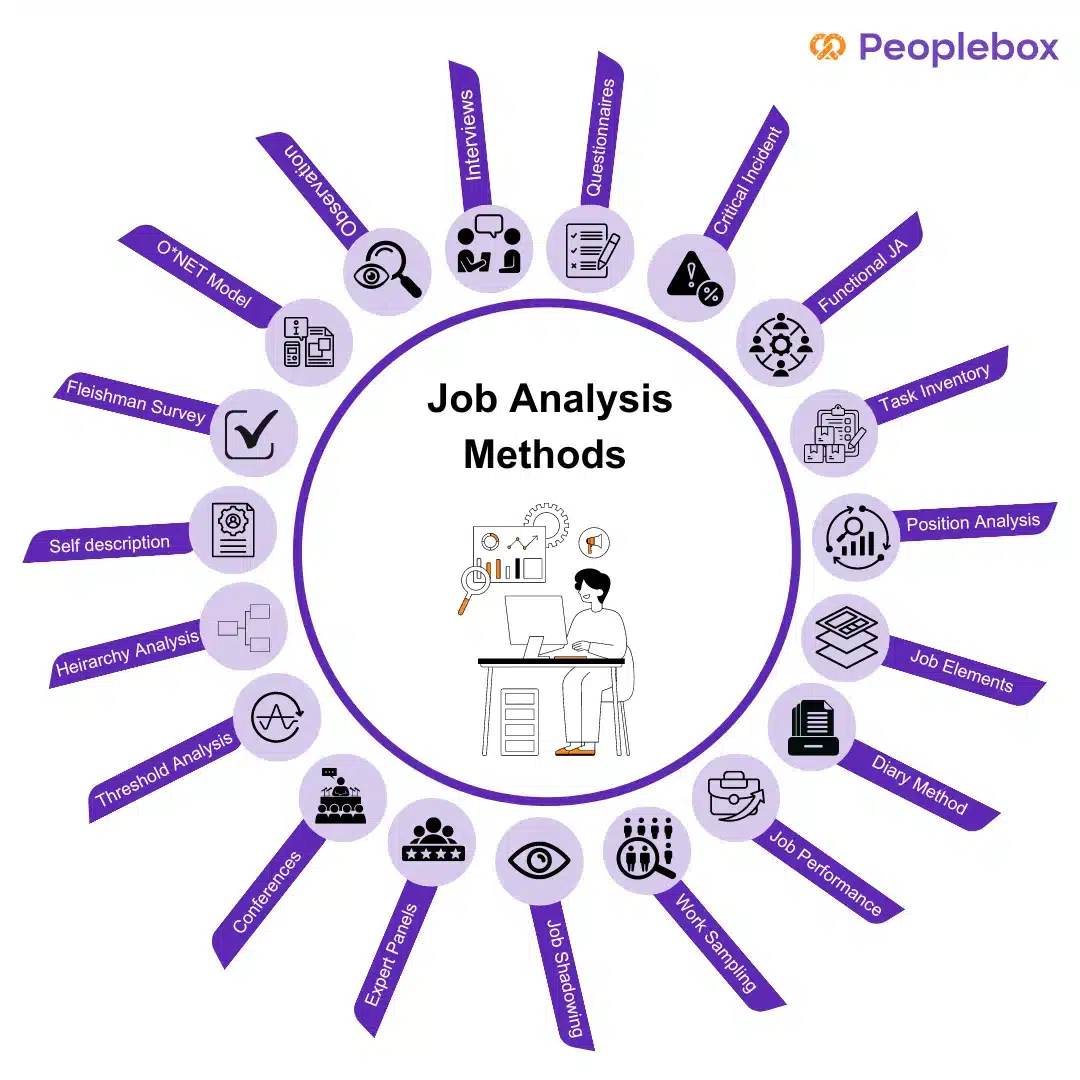
Steps to Conduct a Job Analysis
Although the specific steps may vary depending on the method used, the general job analysis process typically follows these key steps:
1. Choose the purpose
First, you need to choose the purpose of the job analysis and identify the particular job or role you want to analyze.
Decide why you are doing it—is it for hiring new people, for training, or for something else? Knowing the reason helps you focus your efforts.
2. Select Jobs to Study
Next, select a representative sample of workers with the specific job you want to analyse.
If many people have the same job, pick a few different people to look at. Make sure they show different ways the job is done so you get a good picture of the role.
3. Choose Your Method
Then, choose your method or combination of methods for gathering information. Your purpose will help you decide which method will be best suited for you.
4. Gather Data
After that, gather job analysis data based on the methods you picked. Talk to people, give them surveys, or observe them while they work to collect the information you need.
5. Analyze Job Analysis Data
Then, analyze the job analysis data you collected. When you have lots of numbers, it’s helpful to calculate averages and see how much people agree or disagree.
If there’s a big difference in answers, you might need to find out why. For example, if people don’t agree that a task is part of the job, maybe only some workers do it.
6. Document the Findings
Finally, write down what you found. Use this information for the purpose you started with, like updating job descriptions or planning training.
This way, you can make sure the job analysis helps your organization.
Peoplebox: Streamlining Job Analysis for Enhanced Performance
Peoplebox is a comprehensive OKR and performance management platform that not only helps in setting goals but also plays a pivotal role in job analysis. By enabling organizations to clearly define roles, responsibilities, and required competencies, Peoplebox ensures that job analysis is seamlessly integrated with performance management, leading to better clarity and optimized outcomes.
Key Features
- Role Clarity and Competency Mapping: Define and map job roles with required competencies, ensuring alignment with organizational goals.
- Performance-Based Job Insights: Use performance data to continuously refine job descriptions and responsibilities.
- Integrated OKRs and KPIs: Align job analysis with measurable objectives to ensure employees are clear on expectations.
- Automated Feedback and Evaluation: Keep job roles dynamic with regular feedback cycles that refine responsibilities and improve clarity.
Peoplebox enhances job analysis by connecting it with performance metrics, helping organizations clearly define roles and ensure that job expectations are aligned with business goals.
Click here to see a product tour of our performance review !

